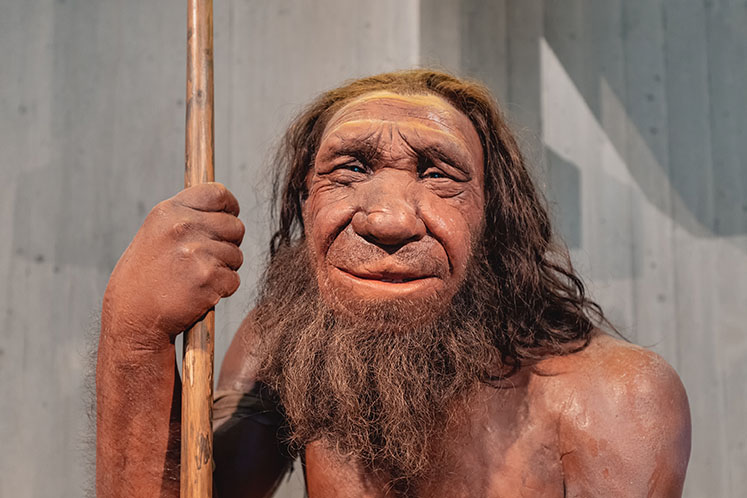

Neanderthals were a type of human that lived in Europe and parts of Asia from about 400,000 to 40,000 years ago. They were taller and more muscular than modern humans, with larger brains and heavier brow ridges. Neanderthals also had a different bone structure than modern humans, with thicker skulls and shorter necks.
Neanderthals were skilled hunters and gatherers. They lived in small groups and built shelters out of rocks and branches. Neanderthals also made tools from stone, bone, and antler.
Neanderthals disappeared from the fossil record about 40,000 years ago. Scientists are not sure why Neanderthals disappeared, but they think it may have been due to competition with modern humans, or to changes in the environment.
Neanderthals were closely related to modern humans, but they had some physical features that were different, such as a larger brow ridge and a receding chin.

Noun: A species of archaic humans that lived in Europe and western Asia from about 200,000 to 30,000 years ago.
Adjective: Relating to Neanderthals.
Derivative: Neanderthalensis.
The word "Neanderthal" comes from the German word "Neanderthal," which is the name of a valley in Germany where the first Neanderthal remains were found in 1856. The German word "Neanderthal" is derived from the Greek words "neos" (new) and "thalos" (valley).
Who were neanderthals?